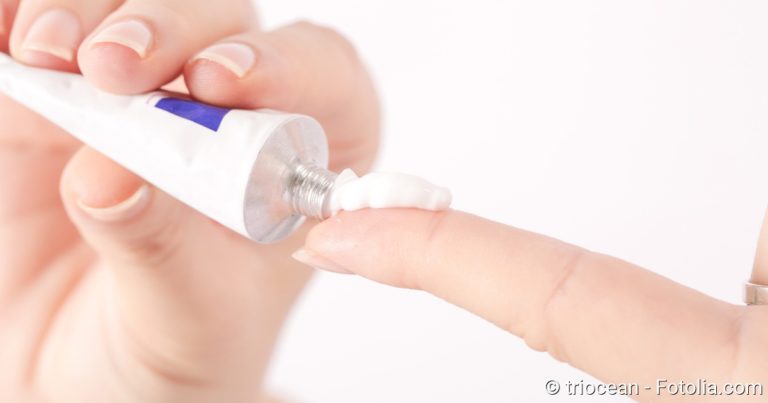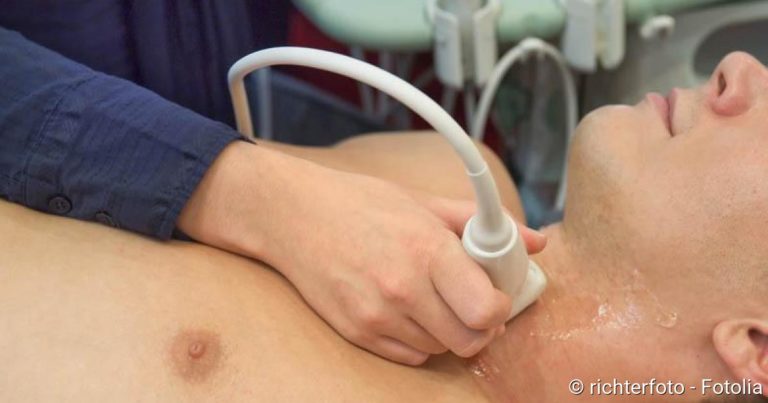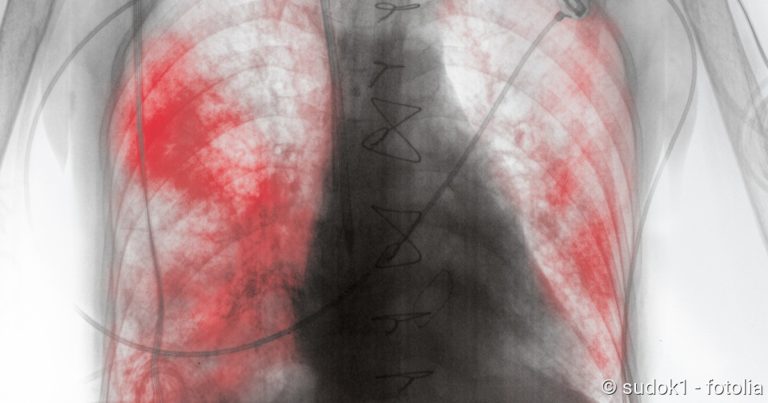Abscess: causes, symptoms, treatment
Abscess: causes, symptoms, treatment

An abscess is an encapsulated cavity filled with pus in the tissue. It can form when the body fights a spatially limited infection. An abscess should be recognized and treated as quickly as possible so that the infection does not spread further. Read here how an abscess develops, what symptoms it causes and how it is treated.
Abscess: short overview
- Description: encapsulated accumulation of pus in tissue
- Causes: mostly bacteria that enter the body via wounds, operations, injections or other infection routes
- Treatment: Opening of the abscess by the doctor, antibiotic administration
- Prognosis: good chances of recovery in case of rapid treatment, in case of non-treatment threatening blood poisoning
Abscess: Description
An abscess is an encapsulated accumulation of pus in tissue. Triggers are mostly bacteria that penetrate the tissue. Then the immune system becomes active. To prevent the infection from spreading further, immune cells melt down the affected tissue and encapsulate it from the surrounding healthy tissue with the help of a membrane. Pus collects inside the cavity. It is composed of dead tissue, dead immune cells and bacterial remains.
The encapsulation makes it more difficult for the infection to spread. At the same time, however, fresh cells of the immune system have difficulty reaching the focus of inflammation. Therefore an abscess must be opened and drained by the doctor. Otherwise, the worst that can happen is blood poisoning.
Abscess: Causes
An abscess is usually caused by bacteria invading the body. Other pathogens are parasites or amoebas.
External injuries
A boil is often the result of an external injury. In healthy people the skin forms a natural protection against pathogens. However, with deeper injuries such as cuts or animal bites, bacteria can penetrate the body and cause an abscess. This risk is all the greater the more contaminated the wound is.
Operations
Operations can also provide pathogens with access to the body. If there is a particularly high risk of infection, the surgeon often applies a drainage. They allow all liquids to drain off immediately. This prevents the accumulation of pus. Patients at risk are also given an antibiotic to nip any possible sources of infection in the bud.
Other tissue damage
Tissue that is already damaged in other ways is particularly susceptible to infection. Examples are parts of the body that are poorly supplied with blood due to diabetes or blood clots, or proliferating tissue as in cancer.
Weakened immune system
Susceptibility to an abscess also makes a weakened immune system. Such an immune deficiency can be the result of HIV infection, but also of any other infection. Chemotherapy for cancer also weakens the immune system.
Common sites of abscesses
An abscess can form anywhere in the body. However, certain areas are particularly frequently affected by abscesses. This is because some parts of the body can easily be attacked by bacteria or other pathogens. Other abscesses form because injuries or during an operation create an artificial entrance for germs.
Abdominal abscess
Abscesses in the abdominal cavity are often caused by injuries or operations on the intestine. Countless bacteria live in the intestine, which play an important role in digestion (intestinal flora). In a healthy intestine the wall is impermeable to germs.
However, in diseases such as a ruptured appendix or intestinal injuries, bacteria can enter the abdominal cavity. The peritoneum often becomes inflamed. However, abscesses can also form.
Especially under the diaphragm (subphrenic abscess), under the liver (subhepatic abscess), directly at the intestinal loops or between the rectum and the bladder/sheath (Douglas’ abscess) an accumulation of pus can develop.
Abscesses of the internal organs
Abscesses in organs such as the liver are also caused by pathogens that have been able to enter an organ deep inside the bloodstream. Organs with a high blood supply such as the liver and spleen are therefore particularly often affected. For example, parasites such as the fox or dog tapeworm and amoebae prefer to form abscesses in the liver, as this organ is easily accessible via the blood from the intestine.
Anal abscess
Due to contact with the stool, which is highly permeated with bacteria, abscesses (perianal abscess or periproctic abscess) form particularly frequently on the anus. In addition, in addition to hair and sebaceous follicles, anal glands also sit directly in the anal canal and secrete secretion – good conditions for bacterial infections.
An abscess on the buttocks can also be an early sign of an inflammatory bowel disease like Crohn’s disease. Men between 30 and 50 years of age develop an abscess on the anus particularly frequently.
Facial abscess
An abscess on the face often forms in severe acne. When bacteria invade sebaceous glands and thickened sebum moves the outlet of the sebaceous gland, a pimple develops. If the bacteria penetrate deeper into the tissue, different centres of inflammation can merge and form a boil on the facial skin.
If the excretory duct of a sebaceous gland is blocked, the sebum accumulates and bacteria can multiply more easily. A purulent inflammation develops.
Abscesses in the mouth
The oral cavity is also heavily colonized with bacteria. Damage to the teeth and mucous membranes allows them to penetrate deep into the tissue, causing inflammation. If the inflammatory reaction becomes isolated, a painful abscess forms in the mucous membrane. Depending on how deep the abscess lies in the tissue, one speaks of mucosal or submucous abscesses.
Coccyx abscess
An abscess on the coccyx often develops in the context of a coccyx fistula (sinus pilonidalis, pilonidal cyst): If a hair grows into the skin of the buttock fold, a channel forms to the skin surface (fistula). Bacteria can penetrate the tissue through this gate and cause inflammation with subsequent abscess formation. Middle-aged overweight men are particularly often affected.
Abscess at a hair root (boil)
An abscess in the area of a hair root is called a boil. These abscesses therefore occur on hairy parts of the body, armpit, scalp and genital area. A painful, tightened knot is formed. If several hair follicles are affected, one speaks of carbuncles.
Breast abscess
Women may also have an abscess in the breast. For example, when breastfeeding or piercing the nipple, bacteria enter the glandular ducts. Then the mammary gland can become inflamed. By encapsulation it develops into a boil in the chest.
Abscesses by injection
If a syringe is not sufficiently disinfected, bacteria can penetrate deeper tissue layers with the needle (syringe abscess). For example, a so-called gluteal abscess is caused by a needle prick in the pom muscle (gluteus).
Abscess: Symptoms
The symptoms of an abscess can be very diverse. Since an abscess is accompanied by inflammation, general signs of inflammation are found:
- Redness
- Swelling
- Overheating
- Pain
- Function restriction of the affected area
The type of pus, its smell and colour vary depending on which bacterium caused the infection.
With an abscess in the abdominal cavity, pain and fever are often the only symptoms. The inflammation can also bring the intestinal function to a standstill (constipation or even intestinal obstruction). If the digestion no longer functions, the patient vomits and defecation stops. As the large intestine in particular is colonised by bacteria, further centres of infection can form in the abdomen.
Almost every person develops one of these enclosed, encapsulated accumulations of pus at some point in the course of his or her life. Abscesses can occur anywhere on the skin, but also inside the body. However, if you have poorly perfused, pre-damaged tissue – such as diabetics – or a weakened immune system, you are more likely to get an abscess.
If abscesses occur repeatedly, a doctor should examine you for diabetes and check your immune system. Recurring abscesses in body folds (armpits, groin, inner thighs, genital area, butt fold etc.) indicate a chronic disease, such as acne inversa. As this gets worse over time, you should consult a specialist as soon as possible.
Abscess: examinations and diagnosis
If the doctor suspects an abscess, first of all he looks for the typical signs of inflammation. Possibly the dysfunction of the affected body part or organ is also noticeable. For example, inflammation in the brain may result in nerve failure. This can be noticeable by tingling, pain or paralysis.
Blood tests
In case of liver abscesses the liver function is disturbed. This is reflected in deteriorating liver function.
Other blood values can also indicate an inflammatory process. Thus, elevated levels of white blood cells and C-reactive protein (CRP for short) usually indicate inflammation in the body.
Imaging methods
With an ultrasound machine or computer tomograph (CT), the doctor can also detect a boil inside the body. It appears as a rounded structure in an otherwise inconspicuous fabric. The wall of the boil appears brighter in ultrasound than the pus inside.
Abscess: treatment
Normally the immune system disposes of dead body cells and pathogens. But a boil is difficult for the immune cells to reach. In order for it to heal, it should be opened and emptied from the outside as quickly as possible.
Abscess surgery
In the course of an abscess operation, the doctor opens an abscess as gently as possible and, in the best case, removes the entire contents. Depending on the extent and severity of the abscess, the procedure is performed by the family doctor or by a surgeon.
Sometimes the pus cannot be completely removed during abscess surgery. Then a drainage is inserted. It serves as an outflow for newly formed pus.
With some abscesses it is sufficient to prick them open. This applies for example to very superficial abscesses of the skin. In the case of larger or deeper abscesses, however, the doctor must ensure that the pus cavity is completely emptied and that the abscess cavity does not close up again so that the abscess can heal.
Abscess treatment with antibiotics
Antibiotics support the fight against the bacterial infection. The choice of the agent depends, among other things, on the pathogen. The location of the abscess and the colour and odour of the pus provide an indication of the type of germ. On the basis of these factors, the physician can estimate the possible pathogens relatively well.
A bacterium can be clearly identified by analyzing sample material of the abscess, which the doctor obtains during the abscess surgery. This analysis takes several days.
Frequently used antibiotics in the treatment of abscesses are clindamycin, penicillins, cephalosporins, doxycyclin or vancomycin. For seriously ill patients, the therapy can be extended with carbapenemas or linezolid.
In rare cases, abscesses are not caused by bacteria but by parasites such as amoebas. For the treatment of abscesses, other agents such as metronidazole or paromomycin are then used.
Never open abscesses yourself!
You should never open an abscess yourself. There is too great a risk that tissue will be damaged and the infection will spread further.
With an abscess, waiting is the wrong strategy. See a doctor as soon as possible so that he can open the abscess. The longer you wait, the more severe the infection becomes.
Abscess: course of disease and prognosis
An abscess is unlikely to heal on its own. However, if the boil is detected and emptied early, it usually heals without consequences.
It becomes problematic when the abscess affects organs that have a poor ability to regenerate, such as the brain. Destroyed nerve cells are not easily replaced. Since certain regions of the brain specifically control individual areas of the body, depending on the position of the abscess, this can lead to failures, paralysis, memory gaps or sensations of discomfort.
If an abscess remains untreated, the infection can spread to the entire body – a life-threatening sepsis (“blood poisoning”) develops.
The prognosis in case of an abscess also depends on the overall condition of the patient. The weaker the patient and his immune system are, the more difficult the fight against the boil becomes.
In people with a powerful immune system, however, bacteria have a hard time. A good body defence is therefore the best protection against abscesses.





